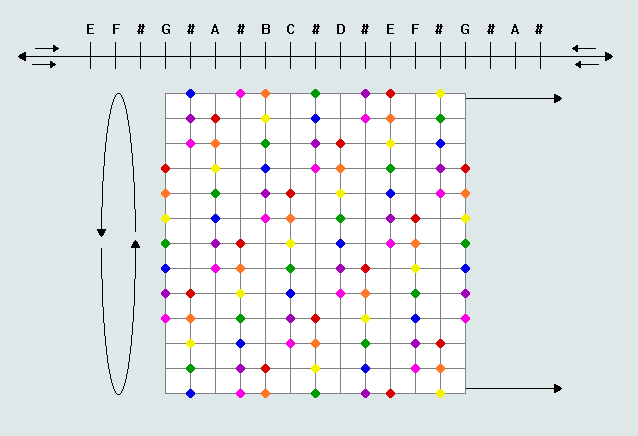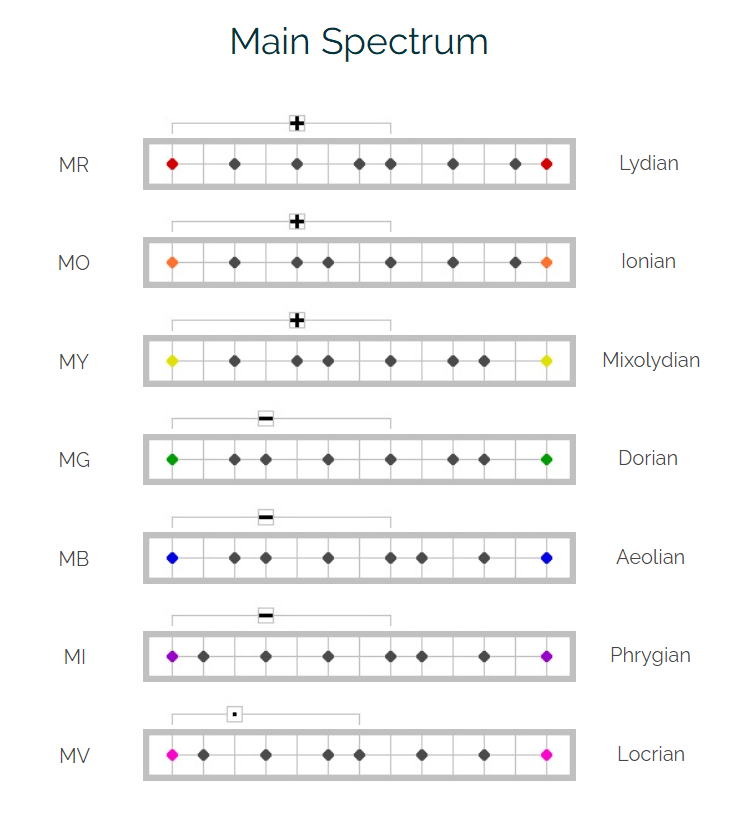The Science of Music Harmony Has Been Discovered To Its Core

Decades ago, we came across a harmony-theory article introducing the idea that Color correlates perfectly to Music at the Modal-Scales of harmony, since Color and Modes each have a Mood aspect. The 'colorfulness' of modes was recognized by the earliest composers, though was not acknowledged by harmony theory until recently, and with the development of this new system.
Using the piano above, one may play a colored-note (left hand) as a bass note, and hear the colorful impression of the mode while performing (right hand) upon the white keys of the 'key of C'. The bass note creates a 'point of view' from which the color or mood of the mode is observed, and this happens regardless of which higher notes within the key signature are being played. Next, we learn each of the modes as scales so we can remember their structure.

A 'musical spectrum' is seen when the main diatonic scale is regarded in two dimensions: The perfect 5th (or 4th) and the chromatic (half step) are the only two intervals that cycle through the 12 notes. These two intervals create two perpendicular dimensions, each involving 12 positions. Vertically it accounts for the Circle of 5ths, while horizontally it parallels the Chromatic Scale on which instruments are played.
The above spectrum shows the seven primary modal-scales, all aligned under the note G for this example. Each mode can be translated to its related key-signature by following from left (lower notes) to right (higher notes). In this system, the Natural Major Scale of any key-signature is always the Orange Mode; the Natural Minor Scale is always the Blue Mode. It is easy to learn the 7 primary modes since each mode has only one note different than the mode above it and the mode below it. They each have a unique scale-form that can be based on any bass note.

The first level of study is to get to know all 7 modes for each of the 12 key-signatures, and which triads and 7th-chords accompany those modes. Gain familiarity by making chord progressions and melodies in the various keys. The guitar benefits the most from this color system, since it is the hardest to learn due to the way it is tuned; meanwhile, the piano keyboard provides the most simplified view of the forms of harmony. Therefore, it is recommended that every musician is acquainted with the piano.
After composing/improvising with these 7 primary modes in each of the 12 key signatures one at a time, we move to the next level where we learn about 'modulation': how to change key-signatures within a song. For this we use the Modary System™ and its Map of Harmony. Later this map will also allow us to combine certain modes in order to use scales which contain more than seven notes.
For more information on the modary and the map visit modary.com: